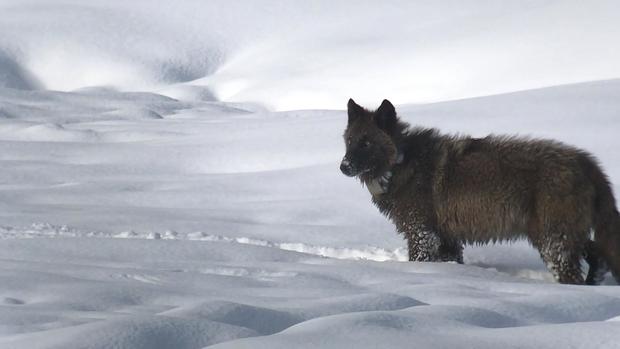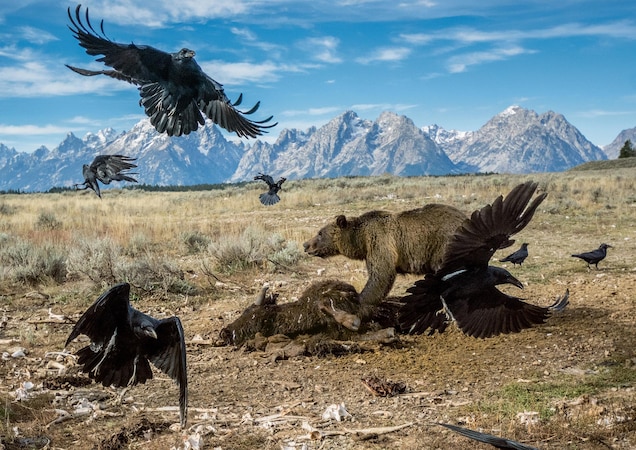
Yellowstone National Park is one of the most visited parks in the U.S., with 4.26 million visitors coming annually. Yellowstone draws people worldwide to see its beautiful landscapes, geysers, sulfur hot springs, and other magical sights. The wildlife that lives in and moves through the park also draws huge crowds when they are seen from the road. The roads and trails in the park, the organized classes from rangers, and the number of visitors might distract from the fact that this is still a wild place and the animals in Yellowstone are still wild animals.
Yellowstone is home to the largest concentration of large mammals in the lower 48 including, black bears, grizzly bears, moose, elk, bison, and wolves. All of these animals draw large crowds when they are spotted in the park, but not everyone knows the rules of how to interact with them, and even fewer people follow them. Yellowstone tells visitors to stay at least 25 yards from large herbivores like Bison and Elk and to keep 100 yards from bears and wolves. The rule of thumb is that if they change their behavior because of a human, that human is too close. This means no petting the cute fluffy animals. Feeding the animals in the park is also off-limits. Not only is it illegal, but it is also harmful to the animals. These human foods change the animals’ digestive biome making it impossible to digest their natural foods. Feeding them also changes their behavior to be less wary of humans and to go seeking food from humans, which can lead to more harm. This is why wolves in Yellowstone are being trained with paintballs to help keep them out of potentially hazardous situations.
Wolves had been wiped out in Yellowstone from hunting dating back to before the park’s establishment in 1872. This was mainly done to keep the wolves away from the livestock, which had replaced their natural prey. By the 1940s, wolves were rarely reported. Congress approved money for wolf recovery in 1991, and by 1996, 31 gray wolves were moved to Yellowstone from western Canada. In the years after this, the wolves have repopulated to 528 and estimated over 2,000 in the areas surrounding Yellowstone. This increase has led to more interactions with people in the park as both wolf populations and park visitation have increased over the past couple of decades.

When animals become dependent on food from humans and are no longer wary of contact with them, it is not only a detriment to the animals’ health, but it can also be dangerous to people if the hungry animal becomes aggressive. Wolves are of special interest in this regard since they are carnivores and generally hunt in packs. To avoid killing potentially harmful wolves, the Yellowstone Wolf Project has adopted other methods of discouraging dangerous behavior. For example, they are using non-lethal projectiles like paintballs in “learning moments” so that they associate getting a little ouchie with that behavior, and the hope is that this will prevent worse ouchies involving visitors.
Using paintballs and rubber bullets makes these wolves more hesitant to travel near humans on the road and has been shown to work. A specific large black wolf identified as “Wolf 1273M” had interactions with humans, including sticking his head in open car windows and even stealing a photographer’s tripod.
In the case of this wolf, he was “hazed” with paintballs over the summer of 2020 and is now living a normal life for a wild wolf. The Yellowstone Wolf project was worried that this wolf’s behavior would continue and that this wolf would be killed because of it, but because of the hazing, he doesn’t want to go to human-populated areas anymore.
National Geographic via OutdoorProject.com
Shooting these wolves, even with paintballs, to hurt them for not knowing where the boundaries of the park are may seem like a disservice to the animal, but if the alternative is being shot, hazing means keeping more wolves alive. This is imperative to the health of the ecosystem in Yellowstone. Not only does the presence of wolves keep numbers of elk, moose, and bison manageable, there are effects on all levels of the food chain. The carcasses of the animals they hunt feed many scavenging carnivores and eventually the plant and microbial matter all around them. They also keep other predators like coyotes away from the area, which allows smaller prey and rodents that wolves don’t eat to flourish. Having wolves killed off again would be the real harm to the park.
The more I see and read, human extinction sounds good to me. For the sake of the 99.9999% of Earthlings, who are almost always worse off (or dead) for having known humans.